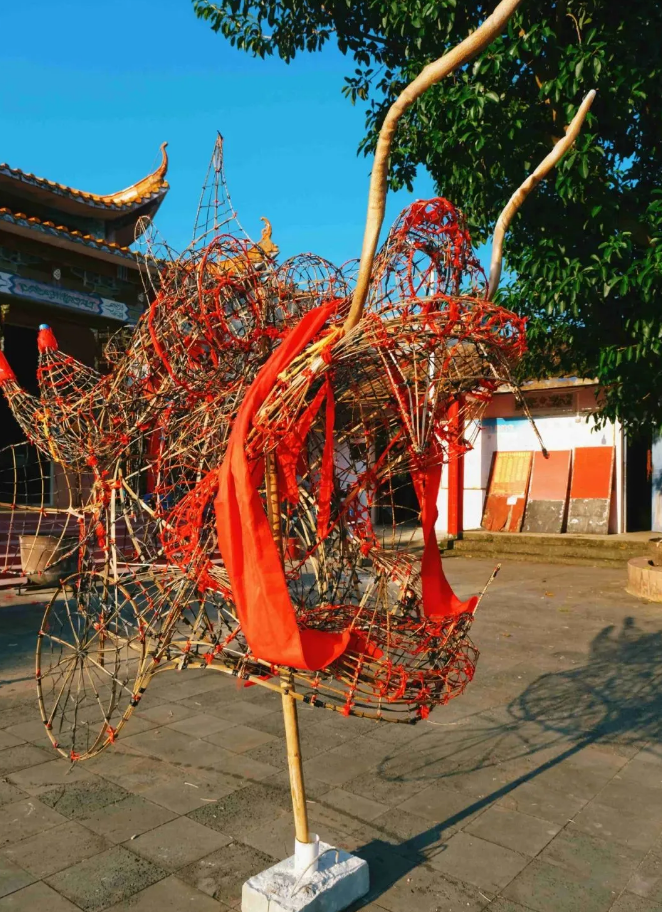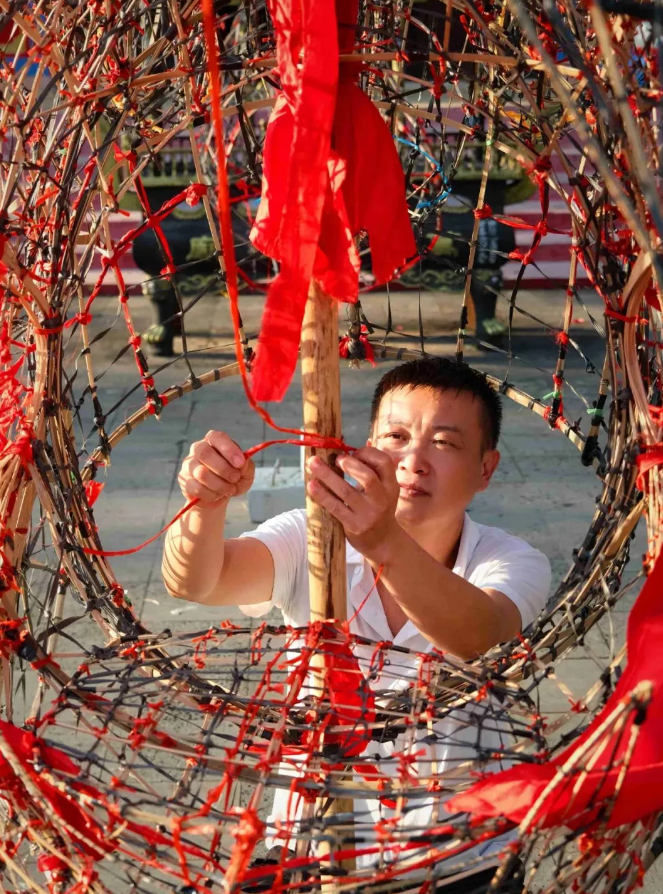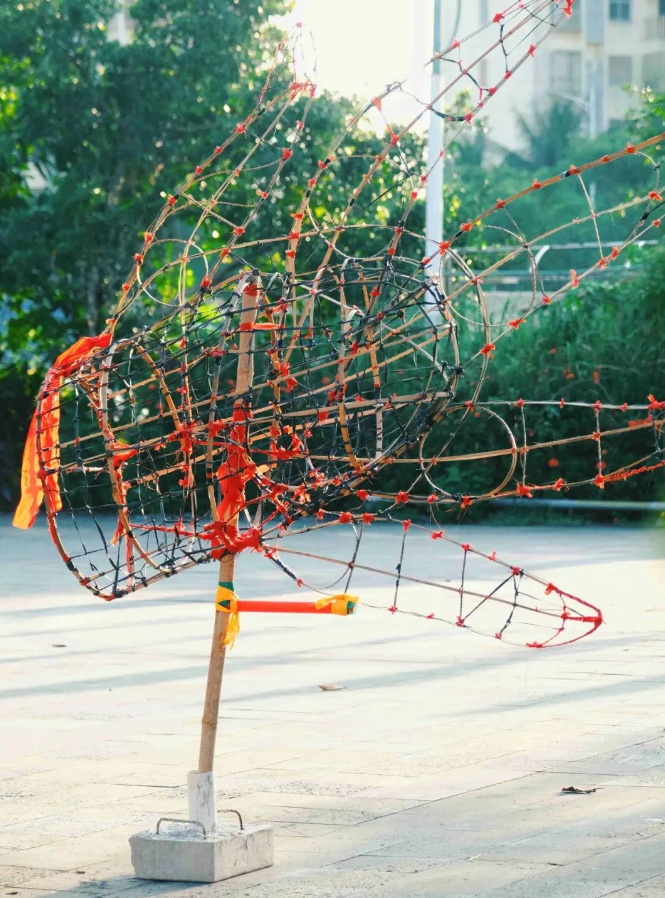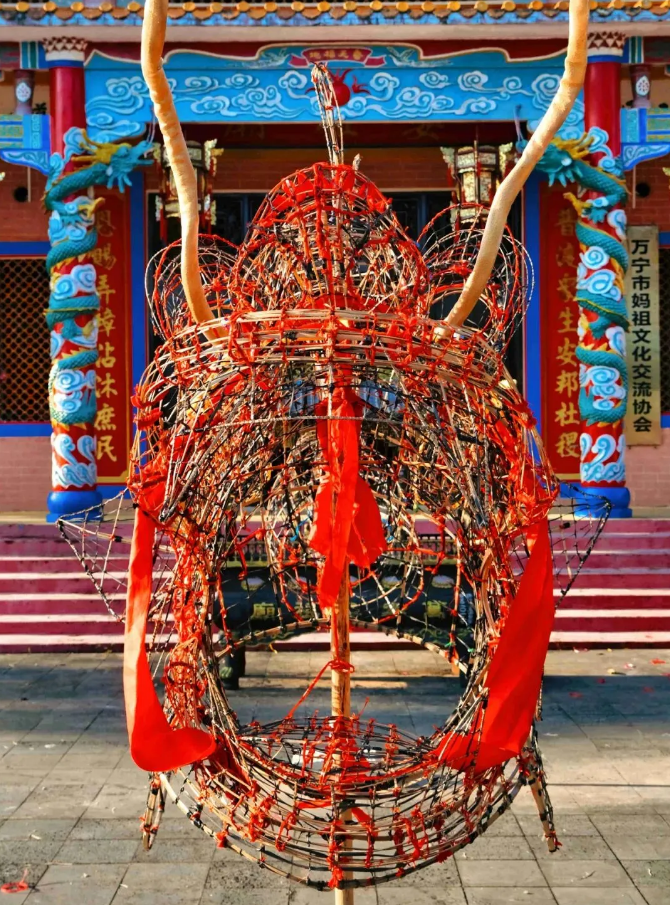A new dragon is coming to Wanning! We can't wait to see it dance

Sping Festival is only a little more than a month away. Recently, Wanning West Gate Dragon Dance Custom Intangible Cultural Heritage Representative Wang Kai has been busy fabricating a brand new Spring Festival Dragon in the East Wing of the West Gate Pozu Temple.

The Dragon Dance is a major traditional folk activity during Spring Festival in Wanning, with the Green Dragon at West Gate and the Red Dragon of Bin Wang the most well known of the Wanning dragons. In May, the‘Wanning West Gate Dragon Dance’ was named an intangible cultural heritage art of Wanning, bringing new excitement to the ancient art.

This year, a new dragon will rise at the West Gate Pozu Temple. It takes around half a year to make a new dragon for the West Gate Dragon Dance.
Wang Kai began solo work on the new dragon in June. “I plan to finish it before Chinese New Year’s Day,” said Wang.

Wang Kai squatted on a green cloth, drawing careful lines. This is the outer skin of the West Gate Dragon, and it stretches nearly 60 meters in length and 2.5 meters in width. The green cotton cloth is usually given three layers of paint, but due to limited manpower and a tight schedule, Wang Kai hopes that this time, just two layers will do. The pattern is first drawn on the cloth, then painted over to fill in the colors.

The West Gate Dragon’s body is composed of four main colors, black, white, blue, and gold, each with a different meaning. Golden semicircles form the edges of the dragon’s scales, with the shadow of each scale marked in black at the top corner. The blue represents the color of the sky, while the white stands for bright alabaster clouds. This way, when the dragon dances, it will seem as if it is soaring through the clouds and mists of the sky.

After the pattern is painted onto the dragon skin, it is draped over the dragon’s body, which is composed of 163 bamboo rings, representing a wish for peace. The center rings are larger, while the outer rings are smaller, conforming to the shape of the dragon’s body, which is thicker in the center and narrower at the neck and legs.

It takes a month to fashion the dragon’s head, and to officially mark the start of the process, Wang Kai takes a piece of bamboo and puts it on the table ceremonially. “This is the ritual to make the dragon’s head.” First, a red cloth is hung from the dragon head stick, and a hole is drilled through. Soon, the mouth begins to take shape, with bamboo forming the angles and contours of each feature as it is painstakingly fastened to the frame. Then, the dragon’s horns, teeth, whiskers, and other details are crafted and attached, and bright gold foil finishes the ‘skin’.
Wang Kai remembers seeing the dragon for the first time when he was only three years old. “My mom took my to my grandma’s house during Spring Festival that year, and we happened to see the Dragon Dance when we passed by West Gate Rd.” Wang’s family tells him that after he saw the West Gate Dragon, he kept following the dragon dance team and refused to go home.
A new dragon will soon rise in West Gate, dancing a bright line across the scenery of the new year, dancing for peace and prosperity, dancing for happy families and bright futures, dancing the wishes of generations of Wanning people into life. Wang Kai stares intently at the dragon skin he is painting, and the whole, cheerful scene appears before his eyes.

Office of the Hainan Free Trade Port Working CommitteeNo. 69 Guoxing Avenue, Meilan District, Haikou City, Hainan Province, 570203, China

hnshgb_xchch@sina.com
Contact Us
- Latest News
- Video News
- Specials
- Press Release
- Upcoming Events
What's New in Hainan
- Industrial Park
- Tax
- Trade
- Investment
- Entry & Exit
- Finance
Invest in Hainan
- Weather
- Transportation
- Health Care
- Attractions & Food
- Fitness & Sports
- Arts & Culture
Live in Hainan
- Copyright © 2020 Hainan Free Trade Port
- Qiong ICP 19005356
- All Rights Reserved





